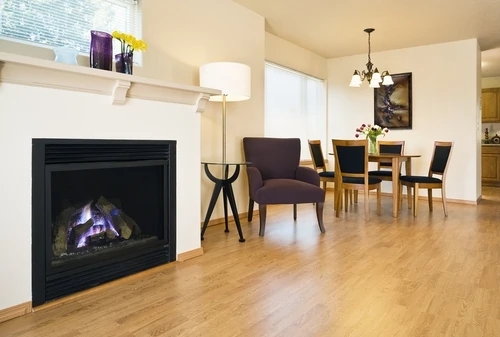(guest post by Ryan Black)
Nothing beats the feel, the sound and the smell of a wood-burning fireplace in the living room. We love it so much that in the absence of a fireplace, we turn on a “yule log” video just to recreate the atmosphere during Christmas time.
Wood-burning fireplaces can be difficult to clean and maintain though. And fires are sometimes a hassle to build when you want to enjoy a warm evening.
Gas, on the other hand, is clean and nearly instant. A literal flip of the switch will heat your home and simulate the sensation of a wood-burning fireplace. Gas fireplaces have come a long way, and if you’re ready to convert your old wood-burning unit to a more convenient solution, here’s how to install your first gas burning fireplace.
Chimney Inspection
Decades of wood burning can take a toll on your home’s chimney. Hire a professional chimney sweep to inspect and determine whether your fireplace is compatible for a gas unit. Most fireplaces are gas compatible. Angie’s List suggests getting your chimney inspected on an annual basis, regardless of whether you’re looking to convert to gas.
Gas Line
If your fireplace doesn’t already have a gas connection, you may want to reevaluate the conversion, as it could be expensive. If a gas connection exists, contact a fireplace service company to extend the gas line to your fireplace. This extension could be relatively inexpensive, as opposed to installing a new gas line, if you already use gas for cooking or water heating in your home.
Fireplace Options
Once you know your home is ready for a gas fireplace, choose one of three options — a gas insert, a vented log or a vent-free log. Your decision should be based on what you want your fireplace to accomplish.
A gas insert can be installed in an existing masonry fireplace. It’s a lower-cost alternative to a complete renovation. If you want to heat your home, use a vented gas log. If you’re not concerned with heat but want the look of an old, wood-burning fireplace, add a vent-free gas log.
Vented gas logs can be better for those who have allergies, as vent-free logs may put unburned combustion products into the air. Some HOAs outlaw vent-free logs too. The Chimney Safety Institute of America gives another great overview of the differences.
Total Cost
The total cost of conversion can range between $1,000 to $6,000, depending on which type of fireplace you choose. Gas inserts are the most expensive, while vented and vent-free logs are more affordable. Gas line accessibility also influences the price.
Professional Help
Gas connections and burning devices are not DIY projects. Hire a professional for this job. Any chimney, fireplace or gas line professional you consider should be licensed and insured, as they will be making major changes to your home throughout the project.
Flip a Switch
Igniting a gas fireplace really is as easy as flipping a switch or even pressing a button on a remote. No more chopping wood, no more crumpling newspaper under logs and no more messy cleanup. Your new fireplace will be instant on and instant off, with nothing to do in between other than sit back and relax.



